REVIEW: BattleTech Hexpack: Cities and Roads

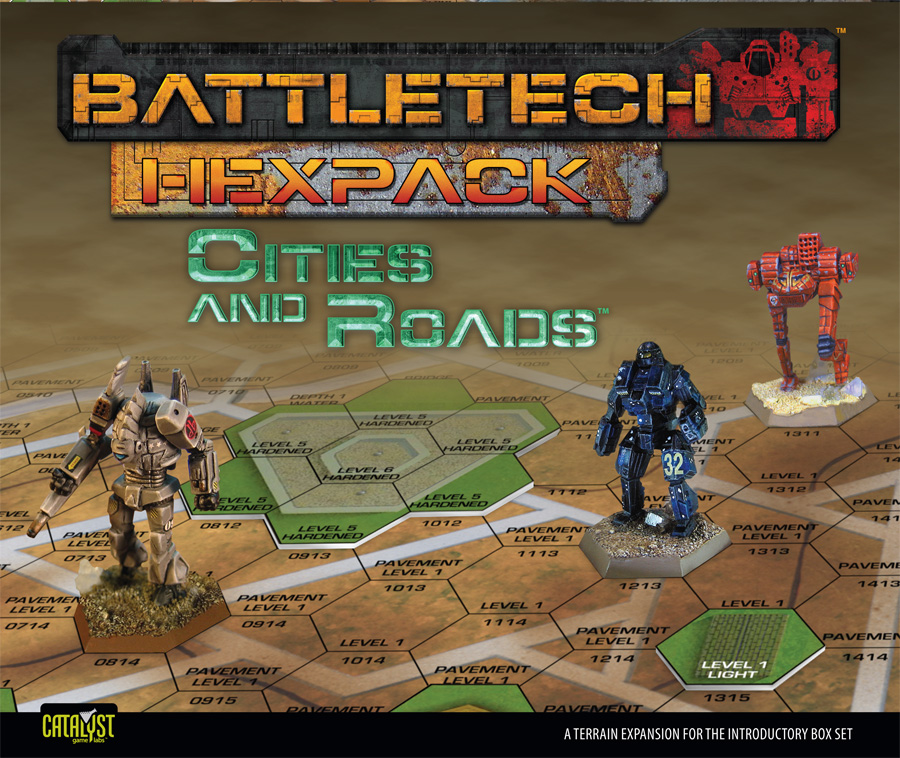 Hey y’all, Voices here with yet another BattleTech product review. This time, we’re taking a look at the recently-released Hexpack: Cities and Roads, companion to 2009’s Hexpack: Lakes and Rivers.
Hey y’all, Voices here with yet another BattleTech product review. This time, we’re taking a look at the recently-released Hexpack: Cities and Roads, companion to 2009’s Hexpack: Lakes and Rivers.
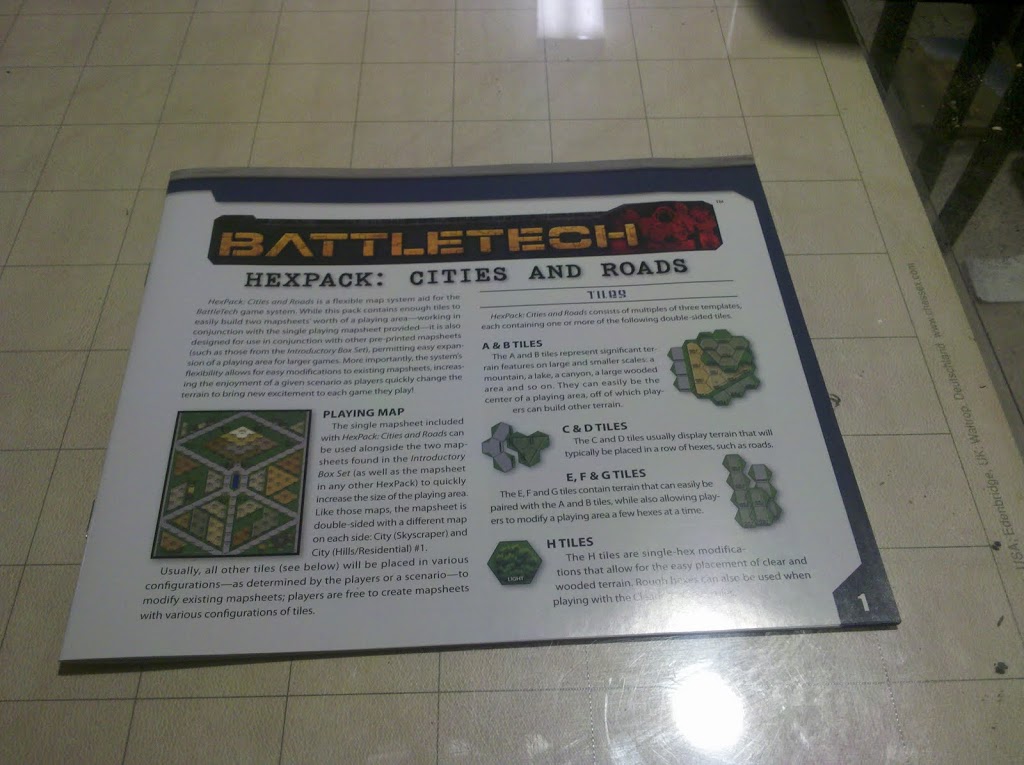
As many of you may know and most of you likely don’t, BattleTech as a system resolves attacks solely at the attacker’s luck with dice; that is, odd circumstances (ie, anything not a straight shot across open ground) modifies the needed minimum roll on 2D6, up (negatively, as a penalty) or down (positively, as a benefit). The two most common methods for the defender to force penalties on the attacker’s target number are movement and cover.
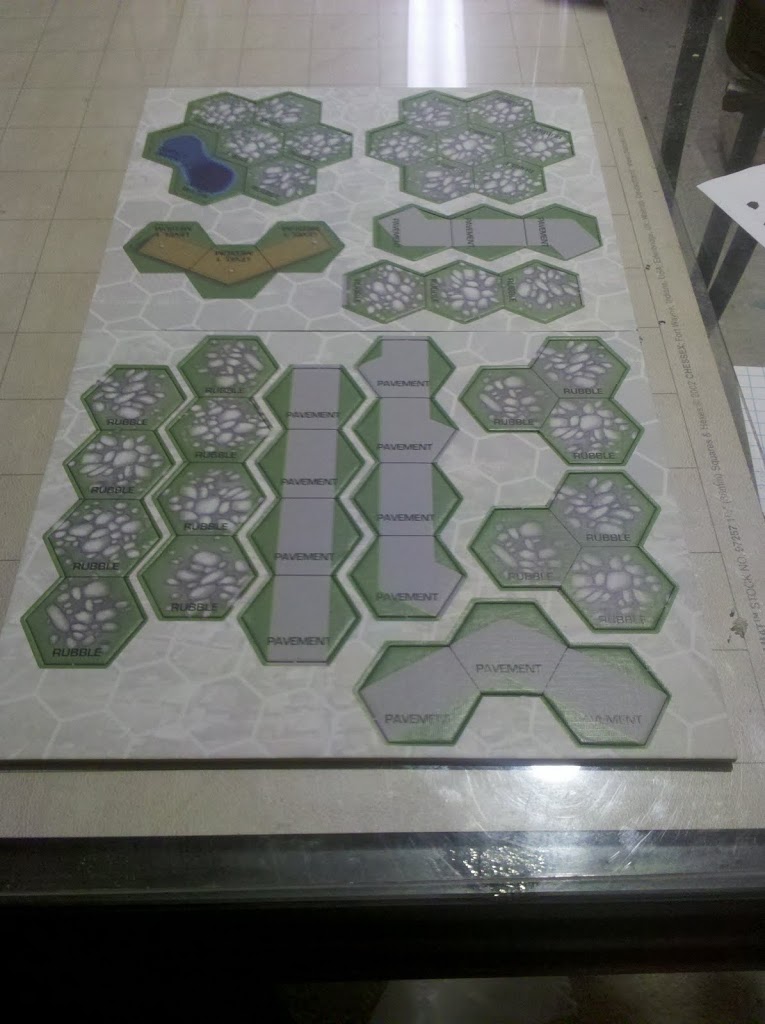
Unlike a lot of games, BattleTech makes very little difference between cover (something hard that will impede shots as well as line of sight) and concealment (soft stuff that solely makes you harder to see); the only real denominating difference is when any of this obscurement cancels out line of sight. The partial cover mechanic marginally provides a difference between cover-that-doesn’t-completely-hide and concealment.
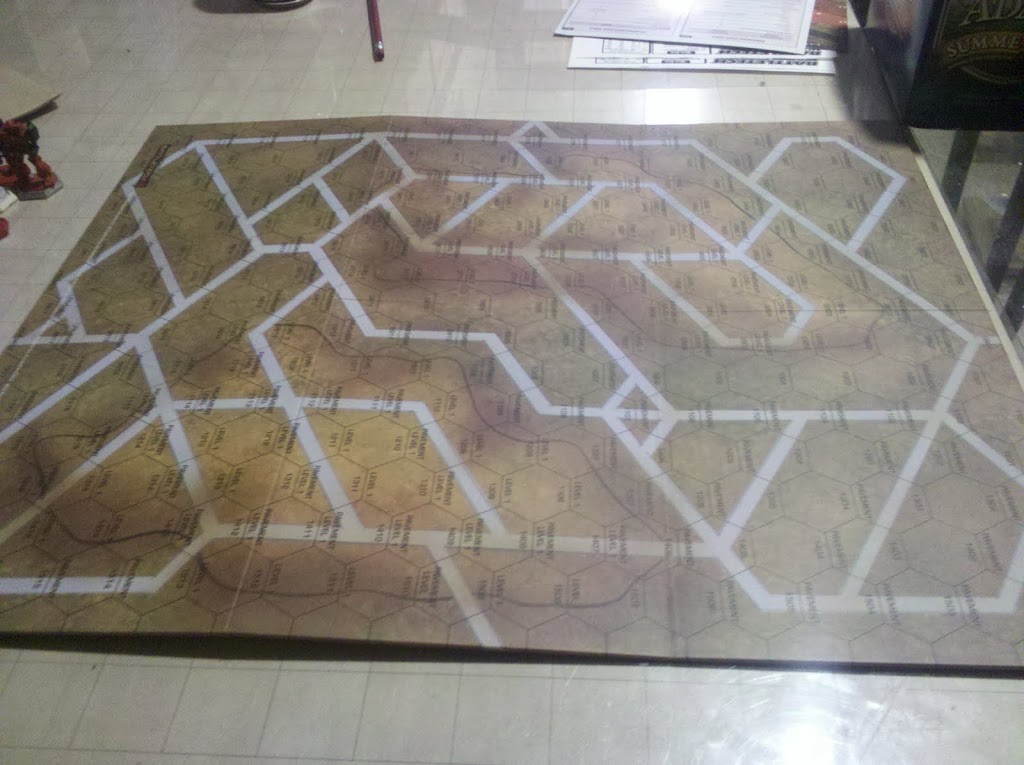
And, honestly, I have to say that buildings are very good for that; they take damage, and will continue to penalize the attacker or flat-out deny LOS until they are destroyed.
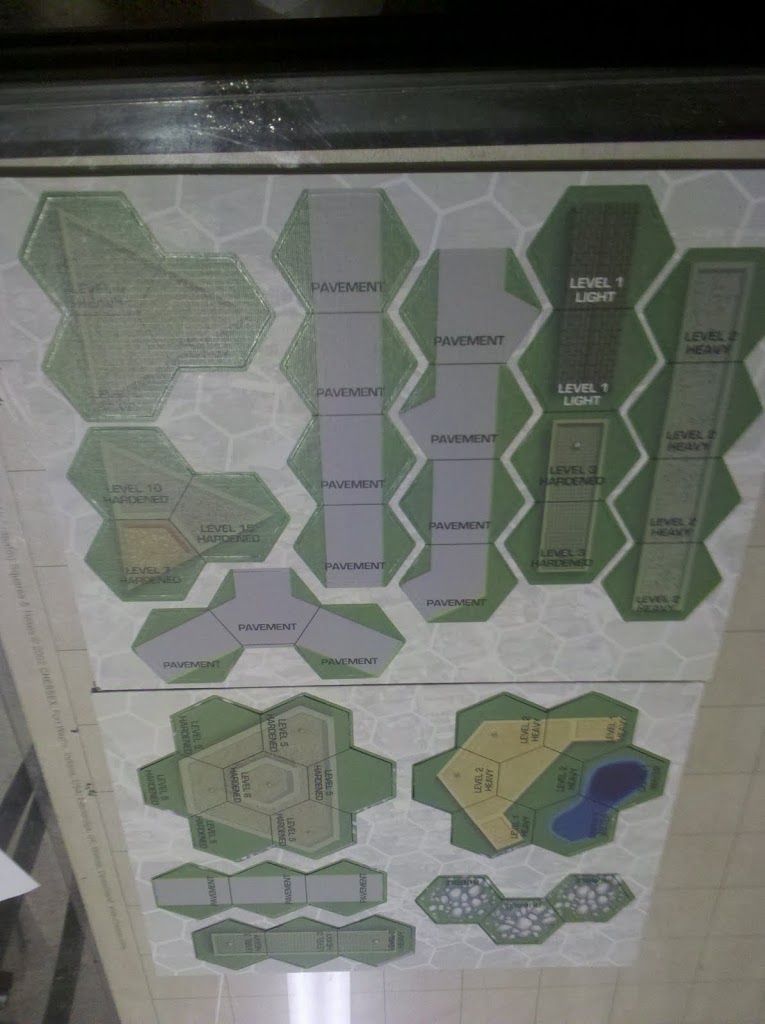
As a player, I love this set; it has most everything I wanted, since I’m a junkie for the larger autocannons and the favorite playground or those weapons…massively dense urban terrain that forces cat-and-mouse games (my favorite ‘Mech is the Victor, a favorite of the old BT writers). And when the month rolls around, I’m gonna see if I can scrounge up the $30 this set retails for…but enough about BT, tactical theory, and eighty ton white metal robots, let’s get on to the busy business of an actual product review!
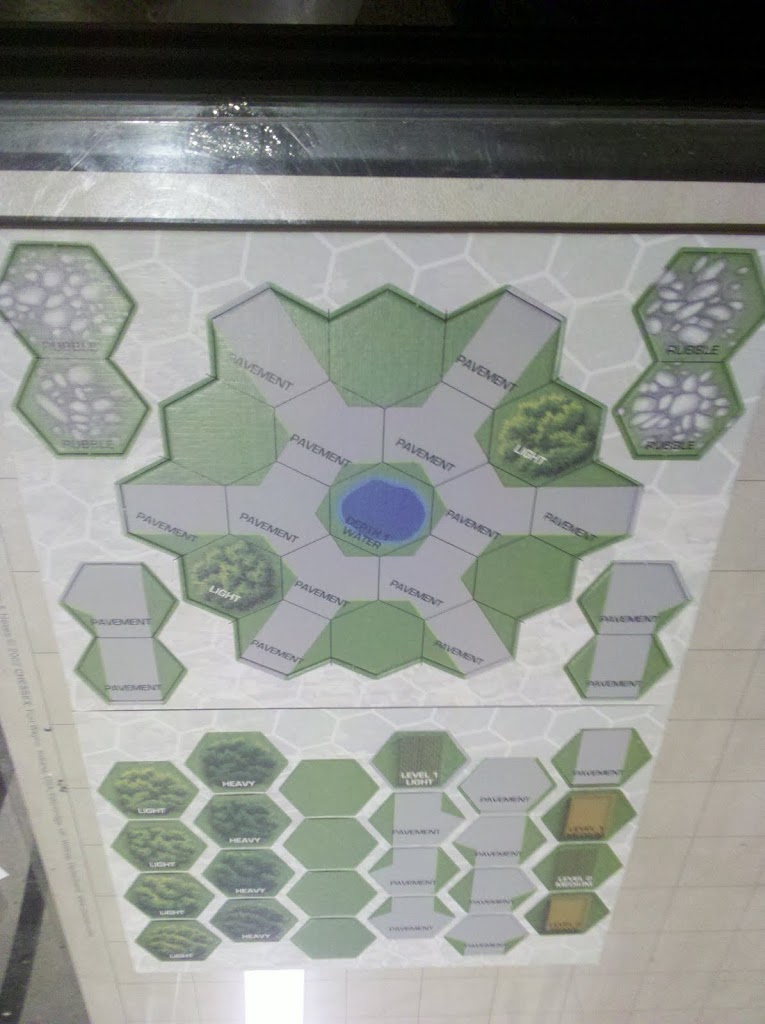
The pack comes with four thick-cardstock sheets full of punchable double-sided terrain tiles that are sized to fit over all printed mapsheets without any difficulty. The variation in tile size and shape is pretty broad within the necessary confines–it must be able to fit into a hexagonal base arrangement of some variety–and the classification of building on the tiles is equally so. About half of the punchable tiles are buildings; the rest divide between roads of varying length and woods of varying density. This is a set for taking that boring old mapsheet and putting a small village in the middle of it to fight over. It’s great for changing the layout of a preexisting mapsheet or creating your own urban nightmare for your Big Stompy Robots to stomp (*stomp stomp stomp*) around, over, and through.
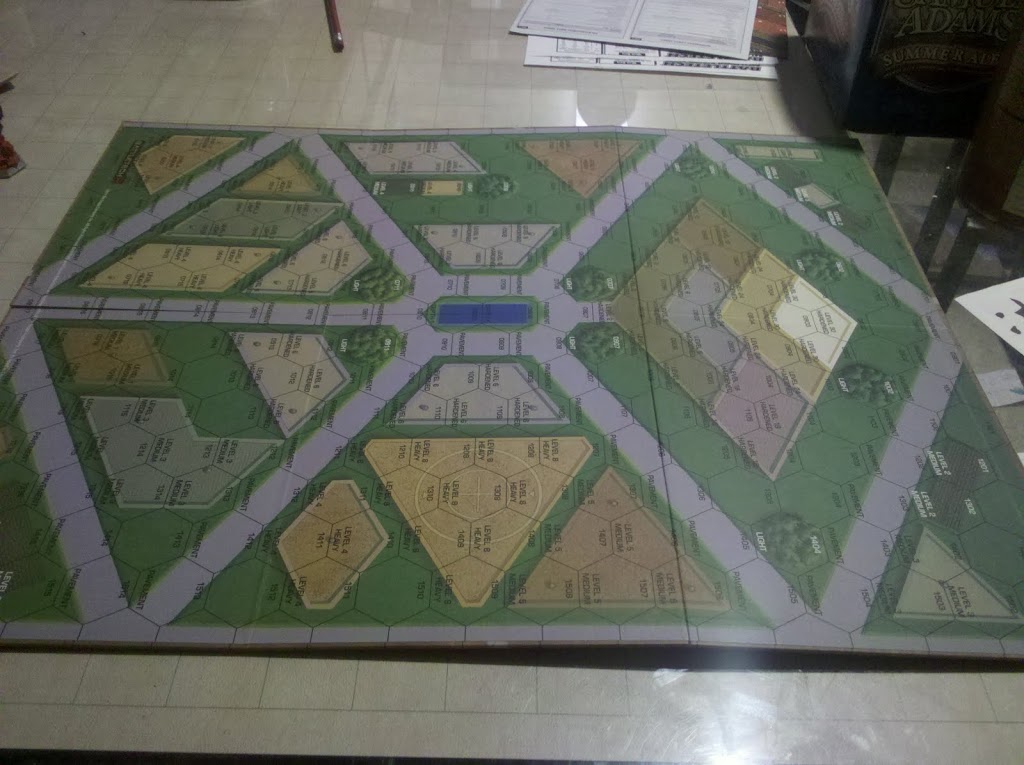
To make it even better, the other item in this set is yet another double-sided, folding cardstock map like the pair in the Intro Box Set; in this case, however, it provides a city street grid on one side and the classic dense-urban “downtown” map from the late ’90s on the reverse.
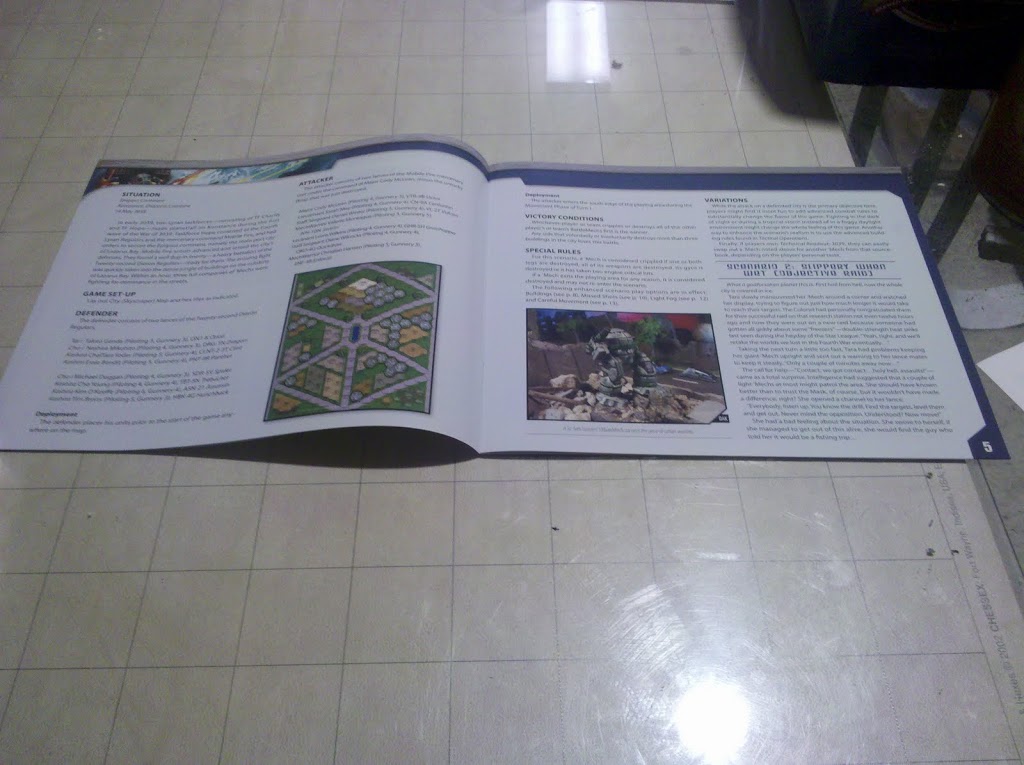 There’s also a small booklet in the pack with some additional rules and several scenarios, a gratifying thing to have around; and the entire set is package in a clear plastic bin that slips inside a light card cover.
There’s also a small booklet in the pack with some additional rules and several scenarios, a gratifying thing to have around; and the entire set is package in a clear plastic bin that slips inside a light card cover.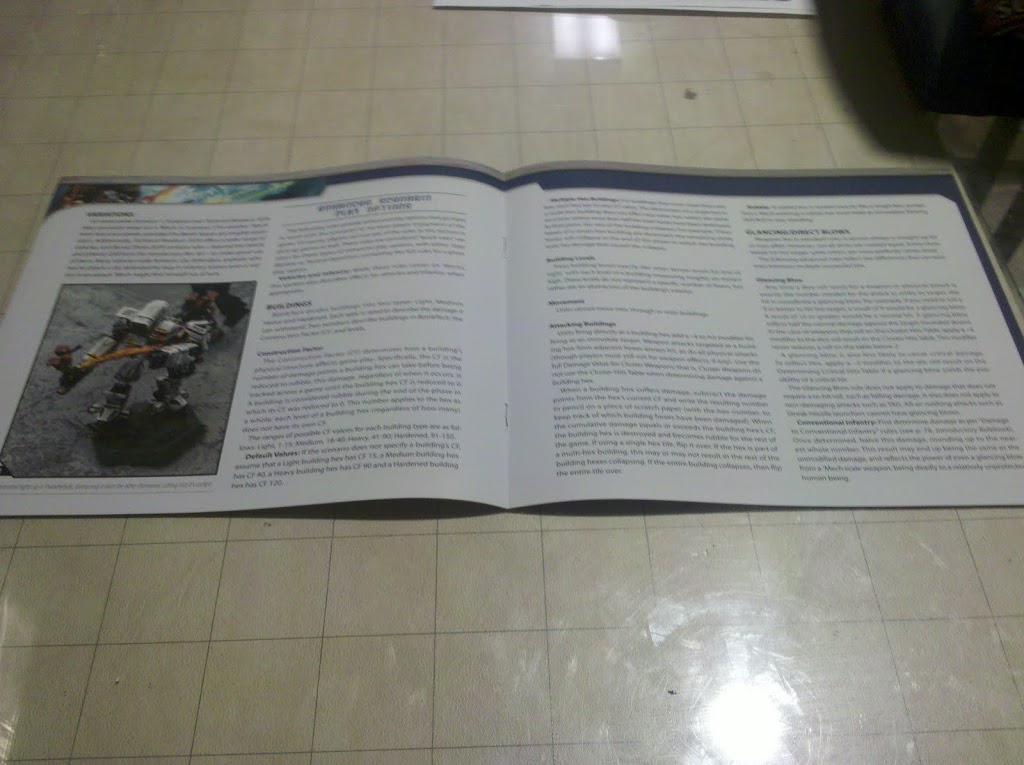
But none of these are the best part! No no no, the best part is that, for most of the building tiles, the reverse of each is a Rubble tile that impedes movement but not weapons fire, perfect for those times when you just want to blow the garbage out of the building instead of maneuvering around, above, or straight through it!
Yes, I know, its still a cardboard set in this modern day of resin and plastic terrain everywhere else in wargaming. Still, Battletech is the very definition of old-school fun. More than you would think, and I really love that nostalgic feel in my gaming now and then.
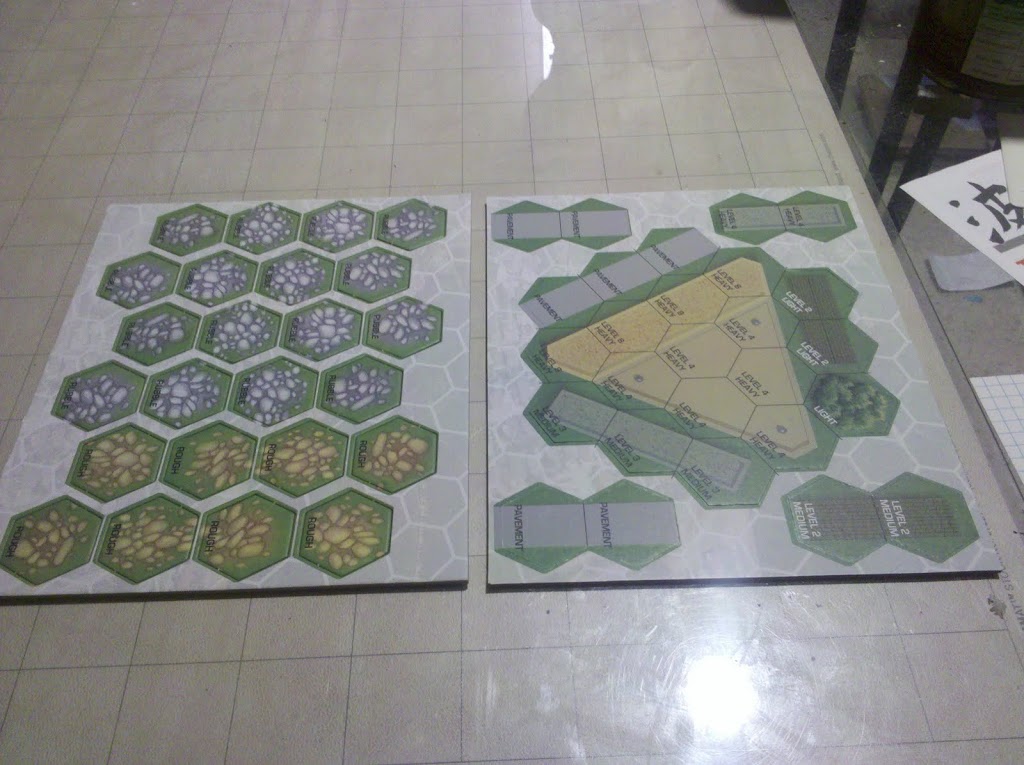 And that’s the end of the review, gentle readers, of the BattleTech Hexpack: Cities and Roads. I’m All Voices Anonymous, and I’ll catch y’all here at the same Bat-time and same Bat-channel.
And that’s the end of the review, gentle readers, of the BattleTech Hexpack: Cities and Roads. I’m All Voices Anonymous, and I’ll catch y’all here at the same Bat-time and same Bat-channel.

